Metalbolical Compilation Volume 1

1. Equinox – Night of Churchyard Watcher
Florida death metal with a tiny bit of groove, like a cross between Massacre and Cadaver, this track grows from a a verse/chorus loop with infectious chant-rhythm vocals into Exodus-style speed metal. The rather straightforward nature of these riffs may make it hard for this band to carve a niche for themselves.
2. Seeking Obscure – Battle of the Undead
Reminiscent of a slower and more brooding Deicide, this one-man band writes strong but non-distinctive riffs that would echo the infectious vocal rhythm, but this in turn reduces internal tension between instruments in the song and consequently, development of the song itself over time.
3. Waxen – I Claim Your Throne
This unabashedly sentimental heavy metal cloaks itself in death metal, then black metal, and finally brings out its true soul, a Dissection/Judas Priest style band with lots of lead rhythm guitar riffs showing off chops that get lost in a song that does not develop much beyond its initial ideas. Add to that the vocals that resemble a chihuahua with a head cold and you can see how confused this approach is.
4. Unburied – Domicile of flesh
Coming to us from the death metal styles of the mid-1990s, this song is half bouncing riffs reminiscent of a more organic version of what Six Feet Under does, and the other half is charging two-chord riffs. If you can imagine a sped up, groovier and more porn/gore-obsessed version of Mortician, the essence of this band takes form in your mind.
5. Archaic Winter – Colors of Despair
This band is at its peak when it sticks to fast death metal riffs that come in clusters of two complementary phrases and a melodic fill, and while the song structure doesn’t evolve much, it varies just enough to bring the mood to a closure. This track suffers from some confusion as to how to stick to the style at which this band is best.
6. Toby Knapp – Polarizing Lines
If you took Joe Satriani and Dissection and put them together in a goofy, over-the-top package like Iron Maiden, you would see the essence of shredder Toby Knapp’s style (he’s also in Waxen). The entire song is like a solo divided into a series of motifs that evolve briefly and then repeat, leaving us without the sense of vast emotional conflict and resolution that made Satriani’s solo albums reviewer favorites. Knapp might do best with some supporting musicians to help shape his raw energy with less musically precise riffing.
7. Dyngyr – Scourge
Reminiscent of other carnival metal bands like Tartaros, this raw black metal with keyboards band manages to keep a basic surging rhythm but throws in too many divergent impulses to tie them all together, creating a riff salad that because its riffs are so similar in rhythm, represents a rotation through different views of the same basic idea. The result is a fun roller coaster that is not particularly memorable afterwards.
8. Onward – Beyond the Strong
As if anticipating that only a few years later, men would stand on stage in tights with guitars and sing about Odin as part of the folk-metal movement that birthed out of black metal, Onward get out there with the old school NWOBHM and speed metal riffs and a soulful, bittersweet vocal track. This is well composed and unabashed in its worship of metal past, like a more hopeful version of In Battle but too pouring out its soul for most power metal listeners to take at face value.
9. Serpent Son – False Hope for Survival
This credible death metal offering aims to throw out many different riffs without them becoming divergent, in the style of bands like Demigod or Pestilence, and succeeds to a degree although many of its melodies use too many connecting notes to unleash their inner atmosphere and subtlety. Instead of throwing in everything but the kitchen sink, they need to refine what they have so its interplay keeps the song intense and growing throughout.
10. Fetid Zombie – Pleasures of the Scalpel
Reminiscent of where Deceased took their music, this band works hard to disguise old school British heavy metal as American guttural goregrind. It’s pounding, chortling, gurgling, burping, crepitating madness until you realize the underpinning riffs are jaunty melodic middle fingers at common sense, similar to Gwar.
11. Nepente – Red Suns
Raw riffing meets interesting combinations of those riffs to make a dark atmosphere that submerges us in repetition made unexpected by changes in context. If you ever wondered what a hybrid of Von and Mortem might sound like, this is a good candidate.
12. Unearthed Corpse – Stench of your Decayed Blood
Ultra-basic death metal in the older style like Master meeting Malevolent Creation, this simple but catchy song uses a few riffs to good effect, pounding out a very similar verse/chorus pattern and then opening a sonorous transitional riff like a wormhole. Reminiscent of early Insidious Decrepancy.
13. Killing Addiction – Thresholds
This theatrical take on the mayhem of old school death metal combines slow necrotic riffing of the style Morpheus Descends made with the upbeat variations of post-Suffocation percussive death metal bands, challenging themselves with tempo changes that remind me of cats leaping between vehicles moving in different lanes of a superhighway. Like their undernoticed “Omega Factor” from 1993, this track has potential but suffers from dominating vocals and messy production.
14. Unit 100 – Bring Me the Circular Time Collapse
Of all the Toby Knapp projects in existence, this one provides the most interesting outlook because it mixes metal genres so fluidly, pacing Fallen Christ style chromatic riffing against avantgarde stylings reminiscent of Supuration. It’s enjoyable to see how the band hold them together and then blend them, creating a confusing musical experience that lingers in the mind after it has passed by, even if aesthetically the mix of stadium rock, Iron Maiden, death metal, crossover and progressive rock is too much of a buffet and not enough of a main course.
You can get this comp for $2 from Metalbolic Records. This is an older compilation, and volumes 2-3 are now available as well for the same price.
No Comments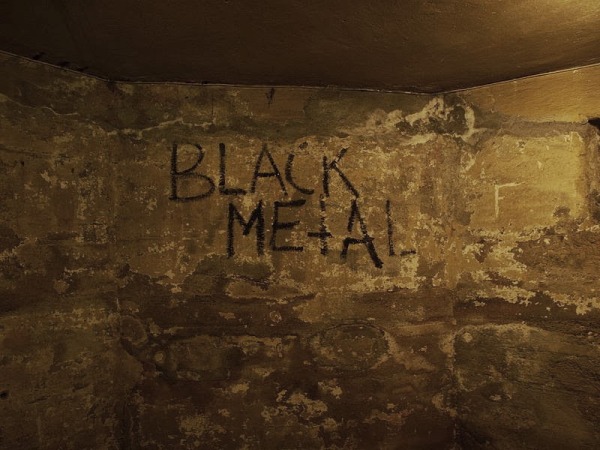

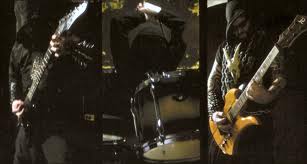 Structurally, the songs of Diocletian adhere to the musical formulas that define
Structurally, the songs of Diocletian adhere to the musical formulas that define 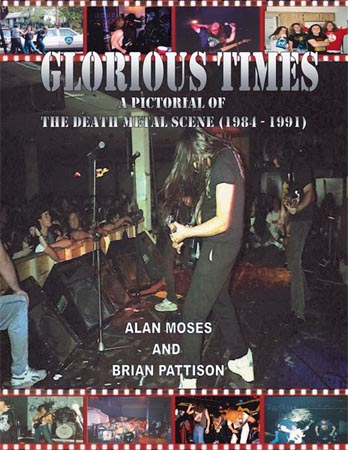


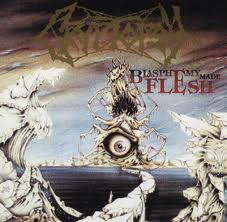
 A refreshingly explosive album, the intensity of Blasphemy Made Flesh reveals an unrelenting desire to exhume much of the prerequisite spirit necessary to create a genuine death metal record. Exuberant, joyful and multifaceted Blasphemy Made Flesh employs indefatigably demented and blistering motifs and phrases to create omniscient and nihilistic visions of the perennial struggle between victim and victimizer. In so doing the listener is effectively reminded of this one eternal fact- that wolves lie in wait among the unsuspecting. Exploited down stroke technique combined with the resulting texture compounds this experience leaving one with the impression of being violated both physically and mentally with a blunted weapon. Left battered and bruised the listener is urged to synthesize and understand the presented raging struggles and their psychological implications.
A refreshingly explosive album, the intensity of Blasphemy Made Flesh reveals an unrelenting desire to exhume much of the prerequisite spirit necessary to create a genuine death metal record. Exuberant, joyful and multifaceted Blasphemy Made Flesh employs indefatigably demented and blistering motifs and phrases to create omniscient and nihilistic visions of the perennial struggle between victim and victimizer. In so doing the listener is effectively reminded of this one eternal fact- that wolves lie in wait among the unsuspecting. Exploited down stroke technique combined with the resulting texture compounds this experience leaving one with the impression of being violated both physically and mentally with a blunted weapon. Left battered and bruised the listener is urged to synthesize and understand the presented raging struggles and their psychological implications.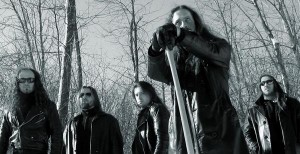 However, despite the pummeling and crushing riff-work an acknowledged necessity of contrast is utilized to create ambiguous moods of contemplation from whence the deranged seemingly view the hideous work wrought upon their most recent victim. In addition to this, the rhythmically dynamic nature of this record fosters the development of a structurally complex album as Cryptopsy utilize a tactful rhythmic precision that through its capacity to delicately change the complexion of motifs, somewhat rivals the expert precision of Suffocation. It is in fact here that we discover much of the vaunted complexity of Cryptopsy, where motifs are manipulated via rhythmic dynamics, and while this may come across as tedious and perhaps overused to some, such technique creates an interesting layer of ever shifting context which listeners are challenged to follow and to interpret. These elements combined with an esoteric yet absurd and morbid sense of melody make this album a twisted and cryptic work whose seemingly contradictory elements point to higher level from whence this work must be contemplated. Although some tracks lack a consistently coherent narrative and may seem erratic at times, expert use of technique, brutality and vision combined with a haughty and commendable sense of ambition makes this work enduring and enjoyable.
However, despite the pummeling and crushing riff-work an acknowledged necessity of contrast is utilized to create ambiguous moods of contemplation from whence the deranged seemingly view the hideous work wrought upon their most recent victim. In addition to this, the rhythmically dynamic nature of this record fosters the development of a structurally complex album as Cryptopsy utilize a tactful rhythmic precision that through its capacity to delicately change the complexion of motifs, somewhat rivals the expert precision of Suffocation. It is in fact here that we discover much of the vaunted complexity of Cryptopsy, where motifs are manipulated via rhythmic dynamics, and while this may come across as tedious and perhaps overused to some, such technique creates an interesting layer of ever shifting context which listeners are challenged to follow and to interpret. These elements combined with an esoteric yet absurd and morbid sense of melody make this album a twisted and cryptic work whose seemingly contradictory elements point to higher level from whence this work must be contemplated. Although some tracks lack a consistently coherent narrative and may seem erratic at times, expert use of technique, brutality and vision combined with a haughty and commendable sense of ambition makes this work enduring and enjoyable.
